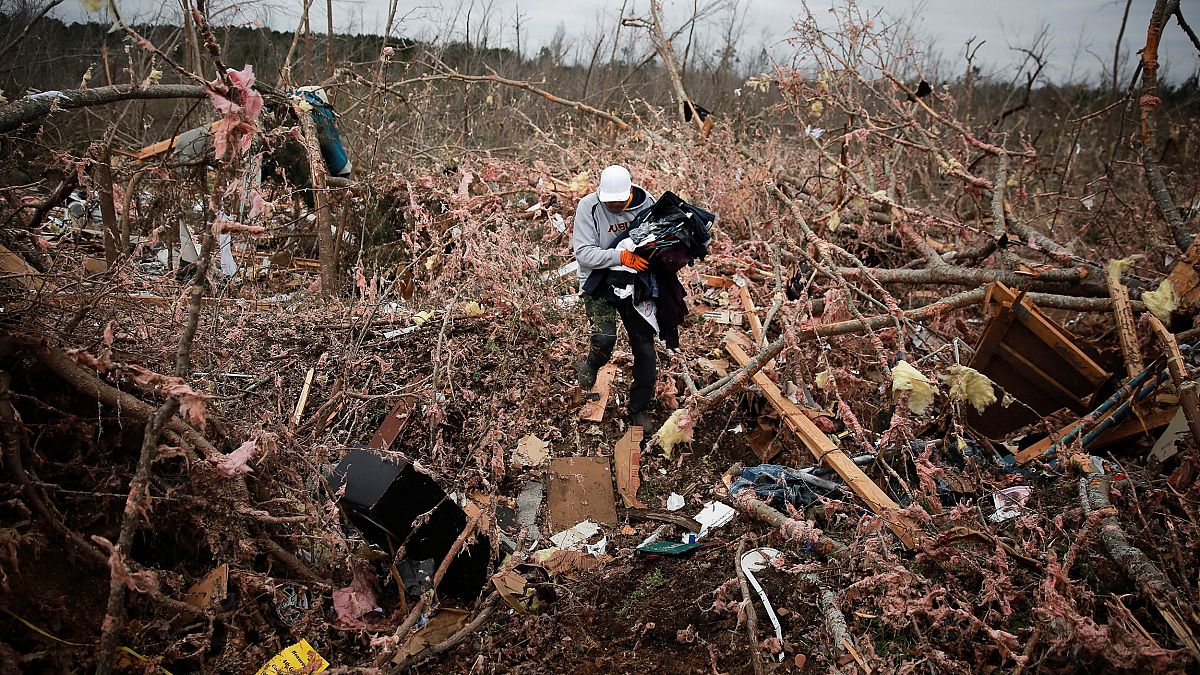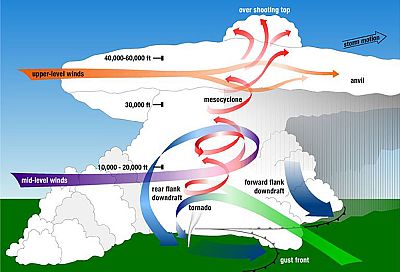The tragedy in Alabama is another grim reminder of their deadly fury.
When tornadoes touched down in eastern Alabama on Sunday, they killed at least 23 people and caused millions of dollars in property damage — adding another grim chapter to the annals of the most violent of all windstorms.
But what exactly causes tornadoes to form, and what makes them so destructive?
What is a tornado?
A tornado, or twister, is a rapidly rotating column of air that stretches from clouds at the base of a thunderstorm to the ground. Tornadoes can produce winds in excess of 300 miles an hour, but even much weaker tornadoes can devastate an area.
Tornadoes are typically 300 to 500 yards wide, though some of the largest ones have spanned a width of more than two miles.
Environment
Tornadoes typically last no more than a few minutes and travel less than a mile along the ground before a shift in the forces that sustain them causes them to dissipate. But some especially powerful tornadoes travel for dozens of miles, destroying entire communities along the way.
What causes tornadoes to form?
Tornadoes are created by severe thunderstorms, with the most violent ones arising from huge, rotating "supercell" thunderstorms. But only 10 to 20 percent of supercells actually spawn tornadoes, and scientists aren't sure why.
What are the effects of a tornado?
Because tornadoes are so brief and violent, their intensity is hard to measure. So scientists gauge them according to the damage they cause — using what's known as the Enhanced Fujita scale. The scale runs from EF-0 for the weakest twisters to EF-5 for the most destructive.
EF-0 and EF-1 tornadoes have winds of up to 110 miles an hour. These twisters cause relatively light damage, such as broken tree branches and exterior damage to houses.
EF-2 and EF-3 tornadoes, with winds of 111 to 165 miles an hour, can cause severe damage — uprooting trees, tearing off roofs and lifting cars, trucks and even trains off the ground.
The most powerful tornado that hit Alabama was rated EF-4, meaning it had winds of 166 to 200 miles an hour. EF-4 twisters can level homes and other structures.
Most powerful of all are EF-5 tornadoes, which have winds above 200 miles an hour. EF-5 tornadoes can sweep away buildings and bridges, topple tall buildings and hurl vehicles more than a mile.
Where and when do tornadoes form?
Tornadoes happen everywhere in the world but are especially common in the flat central region of the U.S. that spans northern Texas, Oklahoma, Kansas, Nebraska and South Dakota — an area that's become known as "Tornado Alley."
Some tornadoes form over the ocean. These twisters, called waterspouts, sometimes stay out at sea and cause little or no damage. Others come ashore, sometimes with devastating results.
Tornadoes can form at any time of year but are especially common in spring and early summer.
What should I do when a tornado hits?
When a tornado is nearby, seek shelter right away. A basement or a sturdy, windowless room is a good option. "If you can't get underground, get to a lowest level and put as many walls between you and the outside as possible," says Hank Schyma, a storm chaser in Houston.
To avoid being blindsided, pay attention to the tornado watches and warnings that are issued by the National Weather Service and publicized on television, radio and social media. "Don't become jaded by a false alarm," Schyma says. "By having a plan to get to shelter and executing it, you may save yourself and your family that one time the alarm is not false."
America's deadliest tornadoes
The tornadoes that hit Alabama were the deadliest in six years. The last time tornadoes killed so many people in the U.S. was in May 2013, when 24 people died in Moore, Oklahoma.
The most powerful tornado in U.S. history was the so-called Tri-State Tornado, which killed 695 people when it struck parts of Missouri, Illinois and Indiana in March 1925. The Enhanced Fujita scale wasn't in use then, but that twister — or twisters — is believed to have been an EF-5.

